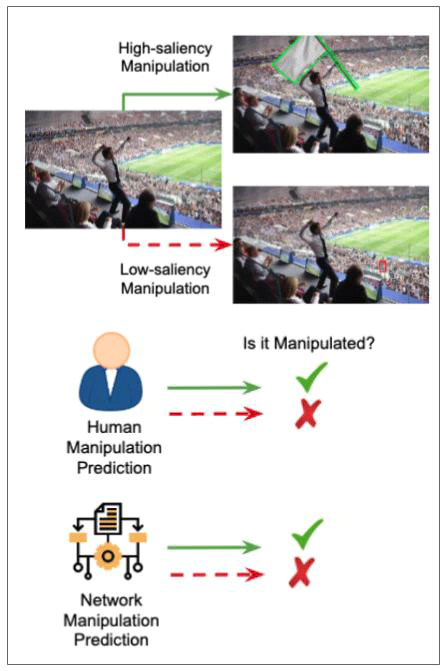
Abstract
The social media-fuelled explosion of fake news and misinformation supported by tampered images has led to growth in the development of models and datasets for image manipulation detection. However, existing detection methods mostly treat media objects in isolation, without considering the impact of specific manipulations on viewer perception. Forensic datasets are usually analyzed based on the manipulation operations and corresponding pixel-based masks, but not on the semantics of the manipulation, i.e., type of scene, objects, and viewers’ attention to scene content. The semantics of the manipulation play an important role in spreading misinformation through manipulated images. In an attempt to encourage further development of semantic-aware forensic approaches to understand visual misinformation, we propose a framework to analyze the trends of visual and semantic saliency in popular image manipulation datasets and their impact on detection.